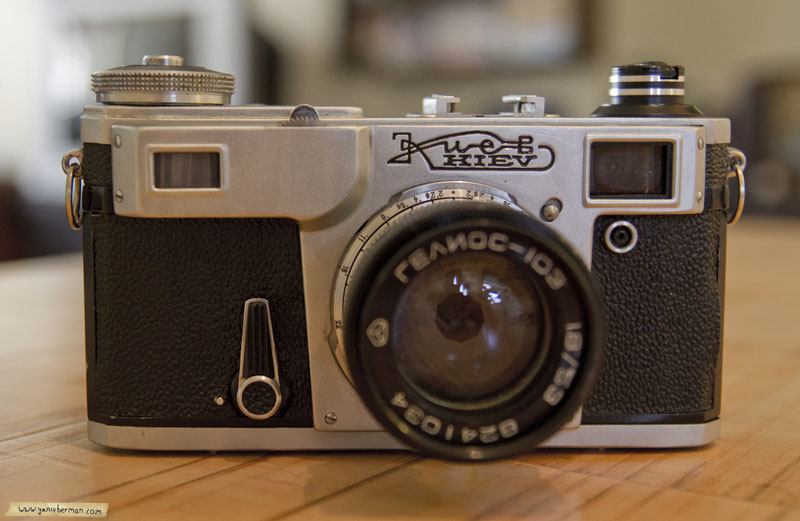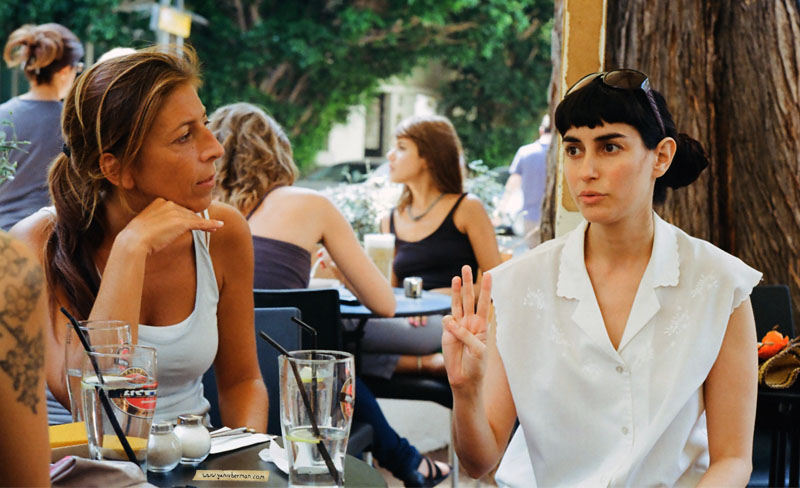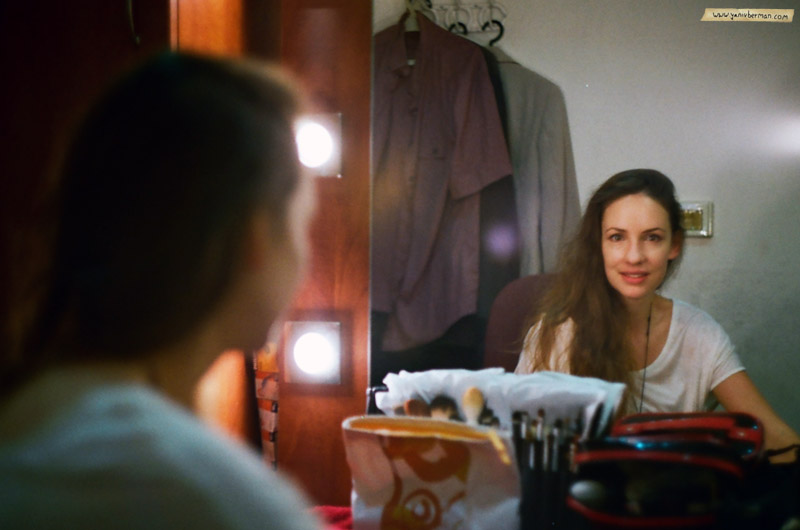My Photographic Time Tunnel - Kiev 4AM
Here I’ve got a sad story about the last roll a camera took before dying in my hands…
It wasn’t a love story of any sort, and when I looked at her for the first time she didn’t leave any impression at all. Leonid told me that in those days (early 70th) he used to shot with his Zorki, but when he got a job with the Russian news company he was given a more professional tool – The Kiev camera. It was a crude beast in comparison to the Zorki, but considered by the craftsmen’s of the era to be a working horse. Since then he had a few Kiev cameras, but they all died on him eventually. “It is possible to fix the camera”, he said, “but it is too complicated operation, getting inside this body stuffed with little parts, and fishing for that torn spring. Better to let her rest in peace. Be glad that she gave you this last roll”.
When working with old cameras you should be very careful; any wrong turn of a button could lead to a disaster. I’m not sure what the turning point with this one was, but when unloading the film it suddenly happened, I couldn’t wind it anymore, and it just kept turning to no end. A sad moment indeed, but I didn’t have any real feeling for this one. It was hard work to shot with, it’s heavy and you have to do the focus from above, which is just hell to get used to. I wasn’t sad about her death, just disappointed…
But then I got the roll back from the lab. Of course the film had many flaws – Flashes of light at the sides, dots and scratches. But still, I just loved the photos. At that moment I felt the sting. I’m not sure I’ll go searching for another Kiev, but I sure will miss this one.
The story of the Kiev cameras is an interesting one. After the Second World War Russia raided German factories for machinery and raw materials. A very prestigious establishment was the Zeiss Company and factories in Dresden, manufactures of the Contax cameras. The Russians transferred it all to Kiev and made it their own. They called the camera by the name of the city that accommodates it. So you can say that the Kiev cameras are actually Contax. About 30 years later they still made these cameras (Kiev 4AM) with very similar specifications, but it wasn’t anything like the early ones from the late 40th (Kiev 2) that were totally German by design and parts.
So what actually the Kiev 4AM had to say for itself?


It’s a rangefinder camera with two parallel rangefinder windows that should be kept clear while you hold the camera. It has a Zeiss/Contax bayonet mount. My Kiev 4AM has an Arsenal Helios-103 53mm lens, f/ 1:1.8 with 0.9m to infinity focal range. The Shutter speed on this camera goes from B, 1/2 up to 1/1000. This Kiev 4AM is from 1980 (Indicated by the two first digits in the serial number), but I’m told that later models has reached a shutter speed of 1/1250. But I haven’t said anything about the nicest part of the Kiev, in my opinion anyway, which is the vertical slat shutter that works like a guillotine – Snaps from the top with a nice click that doesn’t bother the camera when it moves. On the down side you’ve got the weight of the camera – which is about 560g…
Two things you have to know before handling this camera: 1. Winding the film by turning the shutter knob clockwise must be done before changing the shutter speed. 2. At the end of the film, when you want to wind it back, you should find the exact point of the right lower ring, so it’s pushing the film release pin inside the camera. It’s not an easy task, because sometimes the inner lever is too worn to do that. At this point, when I thought I could wind the film back, I got this Kiev 4AM killed…


I had my doubts about this camera from the very first moment. It felt heavy and clumsy in my hands. I loaded it with film and went out for a nice travel with two of my friends (Clarisse from Paris and Marta from Rome), that came to Israel for the first time. We had a wonderful day, walking through the beautiful streets of Tel-Aviv and Jaffa, meeting interesting people, eating good food and taking photos every now and then. While Clarisse and Marta were shooting like crazy with their little digital cameras, I was awkwardly carrying the Kiev, slowly focusing, and clicking with a bitter taste of failure in my mouth.






Getting the scanned images from the lab made me take the camera out of the drawer of dead cameras I’ve got in the closet (with the dead bodies of a Canon Canonet and my grandfather’s Canon EX EE) for a second look. I played with the dead knob, reloaded the camera with used film, played with it some more, and… Surprise! The camera came back to life! You just can’t imagine my surprise. I called Leonid and told him about it, and he also couldn’t believe, after seeing it dead with his own eyes. I guess this Kiev is meant to last, and maybe the feel of film inside of her chamber made her want more clicking and more touring.

